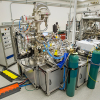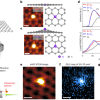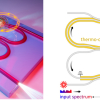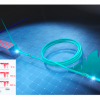In the study, the research team, led by Professor Jongwon Lee in the Department of Electrical Engineering at UNIST and Dr Joo-Yun Jung from the Korea Institute of Machinery and Materials (KMMM), developed a highly effective metamaterial that can be easily mass-produced for a low price. It was created using crisscross layers of nanoantennae in a metal–insulator–metal configuration to have vertical nano-sized gaps of a smaller size than the infrared wavelength. Each layer is 10 nm thick.
“The proposed metamaterial achieved a record-high difference of 36 % in our demonstration on a monolayer with a thickness of 2.8 nm. This is the best record achieved to date among monolayer detection experiments”, researcher Hwang In-yong from UNIST said. Conventional metamaterials require expensive high-resolution lithography machines to produce microstructures on the material’s surfaces, but KIMM’s production stages involve affordable nanoimprint lithography and dry-etching processes to cut manufacturing costs.
















